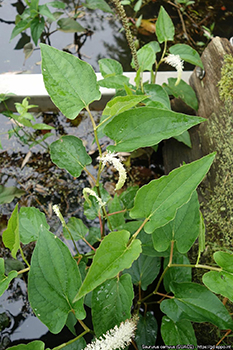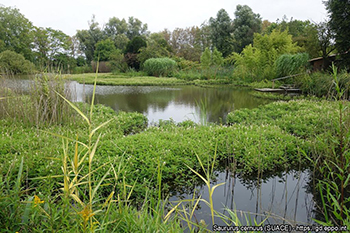
EPPO Alert List – Saururus cernuus (Saururaceae)
Why
Saururus cernuus is an aquatic and semi-aquatic plant species native to North America and found in limited areas of the EPPO region. The EU LIFE RIPARIAS project has identified S. cernuus as an alert list species for Belgium with a high risk of introduction and establishment. The EPPO Panel on Invasive Alien Plants are seeking further information on any additional occurrences of S. cernuus in the EPPO region and reports of environmental and economic impacts.
Geographical distribution
EPPO region: Belgium, France (including Corsica), Germany, United Kingdom.
North America: Canada (District of Columbia, Ontario, Québec), Mexico, USA (Alabama, Arkansas, Delaware, Florida, Georgia, Illinois, Indiana, Kansas, Kentucky, Louisiana, Maine, Maryland, Michigan, Mississippi, Missouri, New Jersey, New York, North Carolina, Ohio, Oklahoma, Pennsylvania, Rhode Island, South Carolina, Tennessee, Texas, Virginia, West Virginia, Wisconsin).
Oceania: New Zealand.
Morphology
An upright hairy perennial which can grow between 15-120 cm in height. Leaves are lance-shaped to nearly triangular with a cordate base. Flowers occur on an inflorescence up to 15 cm in length. S. cernuus has rhizomes, often with adventitious roots. Seeds brown, 1-1.3 × 0.7-1 mm, smooth.
Biology and Ecology
Saururus cernuus is an aquatic and semi-aquatic perennial plant, submerged or emerged. It flowers throughout the summer and sets seed from July to September. It can reproduce both vegetatively and via seed. In some countries in the EPPO region (e.g. Belgium), reproduction appears to be exclusively vegetative.

Saururus cernuus – Courtesy: Etienne Branquart
Habitats
Saururus cernuus is found in marshes, streams and along stagnant water bodies. It can be found in lotic and lentic conditions, growing as a submerged form in the water column or as an emerged form at the margin of waterbodies. It is tolerant of water level fluctuations. It can also be found in the understory of swamp forests. S. cernuus is tolerant of some shading but grows best under moderate to full sun.

In a waterbody in Belgium – Courtesy: Etienne Branquart
Pathways for movement
Saururus cernuus is a popular ornamental plant and as such may be intentionally transported over long distances. It can also be spread unintentionally through dumping of garden waste. Additionally, accidental transport can occur from established populations by recreation equipment or machinery. The rhizomes contain aerenchyma tissue allowing them to float – which can promote natural spread.
Impacts
In France, S. cernuus is reported to be able to outcompete native plant species and contribute to the degradation of EU-listed habitats. In New Zealand, S. cernuus is considered a minor weed.
Control
As the species grows in and around water the use of chemical control methods is limited. Removal using machinery and physical uprooting has been used to control the species though all parts of the plant must be removed for this to be successful.
Sources
Branquart E, Adriaens T, Devisscher S, D’hondt B, Denys L, Dumortier A, Latli A, Packet J, Scheers K, Vanderhoeven S, Willeput R (2022) Belgian alert lists of alien aquatic plants and crayfish. Report prepared in support of implementing action A1 of the LIFE RIPARIAS project LIFE19 NAT/BE/000953, 15 pages.
Denys L, Packet J, Verhaegen F (2008) Een tweede groeiplaats van Saururus cernuus in Vlaanderen. Dumortiera 95, 27-28.
RIPARIAS project (2023) https://www.riparias.be/
Swatek JH, Loos GH, Keil P, Haeupler H (2004) Saururus cernuus L., das Eidechsenschwänzchen, im Duisburg-Mülheimer Wald (Westliches Ruhrgebiet, Nordrhein-Westfalen). Floristische Rundbriefe 38, 39-44.
